AVIOBOOK.com
"the on line aviation corner"
edited by mauro finati/flighline iaps and paolo rollino/aviation reports
DESERT DEFENDERS
(text and pictures by Mauro Finati & Paolo Rollino)
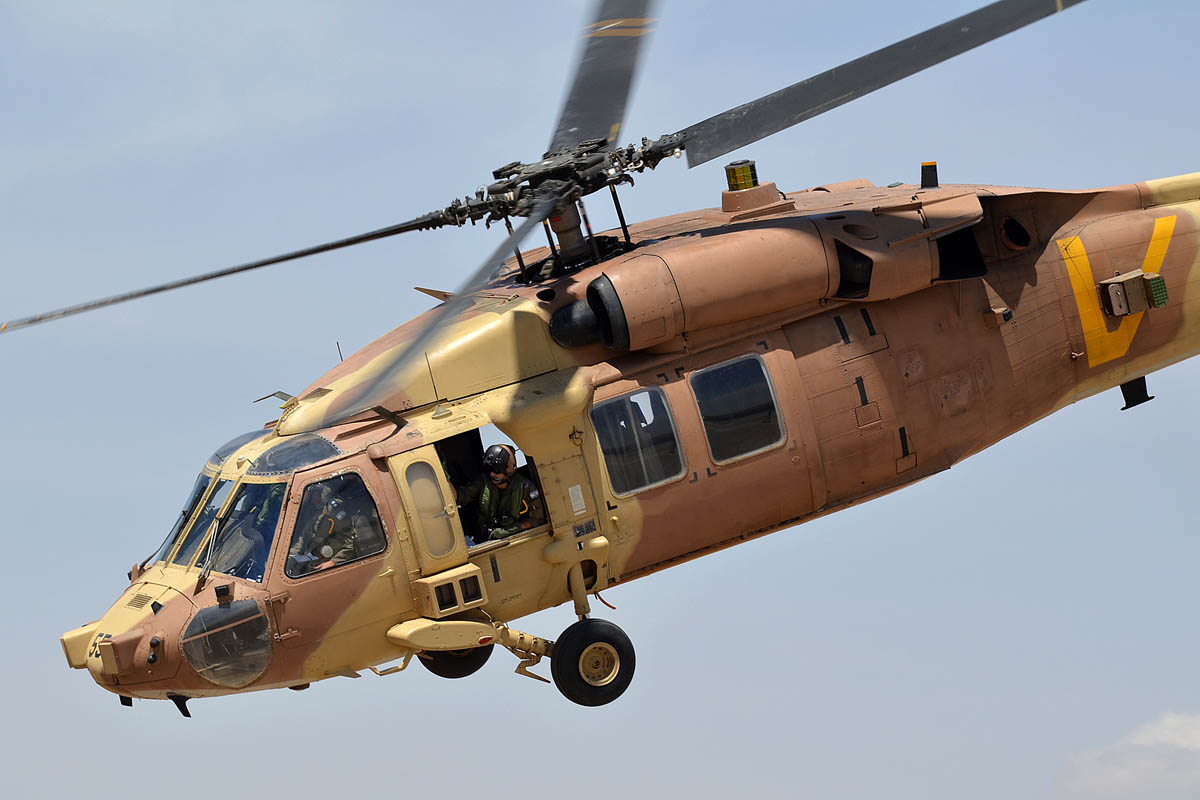
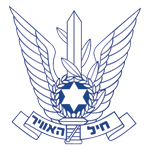 Israel's limited territorial area and topography do not present major limitations to the movement of ground troops and materials.
However, it is easy to see how the rapid deployment of assets can often make a difference. In conflicts, armed clashes, or incursions along the border,
it is essential to quickly bring personnel and equipment on site and the helicopter is typically the best means of transport for responding to these needs
over short and medium distances.
Israel's limited territorial area and topography do not present major limitations to the movement of ground troops and materials.
However, it is easy to see how the rapid deployment of assets can often make a difference. In conflicts, armed clashes, or incursions along the border,
it is essential to quickly bring personnel and equipment on site and the helicopter is typically the best means of transport for responding to these needs
over short and medium distances.
Beyond typical airlift operations such as the movement of troops and cargo, SAR, Combat SAR and MEDEVAC, the Heyl Ha'Avir (Israeli Air Force) has long understood
the importance of the helicopter as a key factor for success, especially on the most complex attack operations and support of Special Forces. Israel's prolonged
military engagement against the neighboring Countries, terrorist organizations and militias that almost daily threaten its security, have led to the
establishment of a large rotary-wing fleet able to perform all operational roles with effectiveness.
The progressive growth of the Heyl Ha'Avir’s helicopter component, both in quantity and quality, came hand in hand with a radical change to its
operational approach. These changes have become indispensable to successfully face current asymmetric threats, which are characterized by the
urban conflicts in the Palestinian Territories and the Gaza Strip.

THE TRAINING
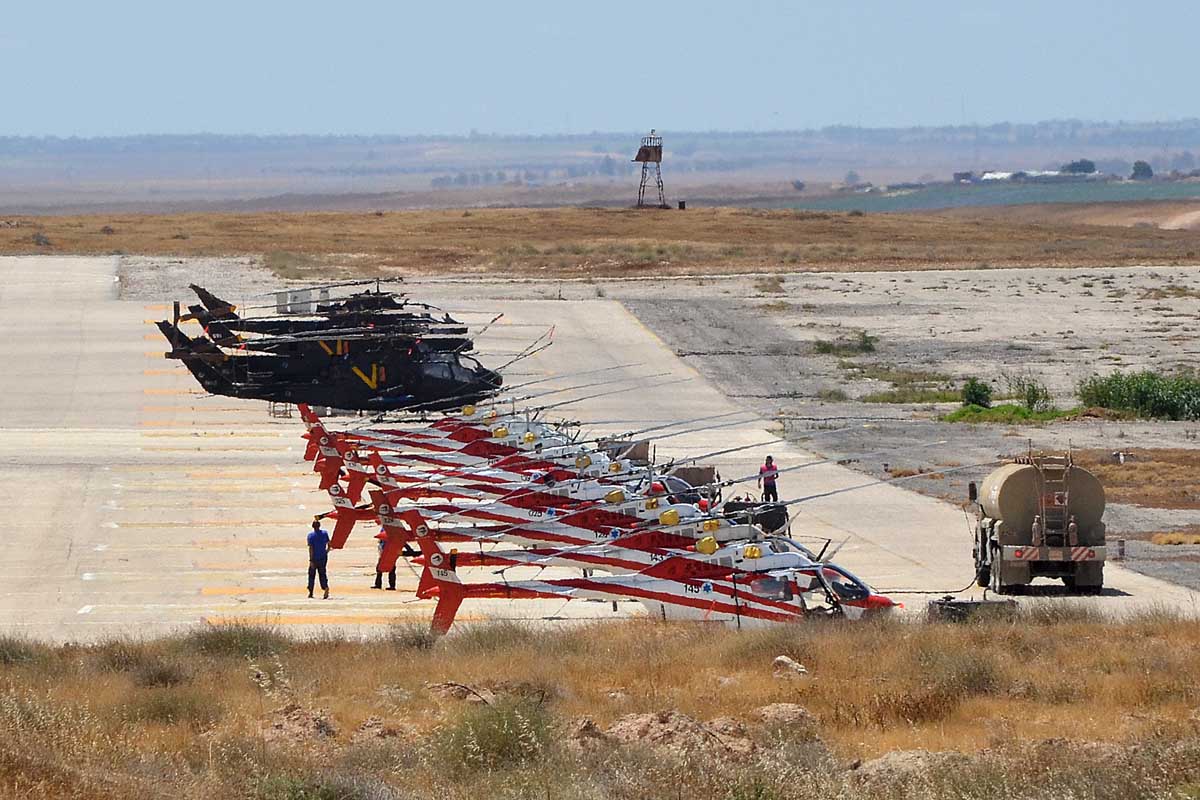 The development of the Israeli helicopter fleet has taken place mainly with the strong support of the United States, so that the types currently in service are
almost entirely of American origin. However, Israel has established its own advanced military industry, developing high-tecnology fields in which it has reached
real levels of excellence, particularly missiles, avionics, UAVs and airborne radar. As is the case with its fixed-wing combat aircraft, all helicopters currently
in service with the IAF are equipped with domestically produced avionics and weaponry, whose full operational capabilities have never been officially declared.
The development of the Israeli helicopter fleet has taken place mainly with the strong support of the United States, so that the types currently in service are
almost entirely of American origin. However, Israel has established its own advanced military industry, developing high-tecnology fields in which it has reached
real levels of excellence, particularly missiles, avionics, UAVs and airborne radar. As is the case with its fixed-wing combat aircraft, all helicopters currently
in service with the IAF are equipped with domestically produced avionics and weaponry, whose full operational capabilities have never been officially declared.
In addition to the sophisticated and technologically advanced systems installed on its rotrcraft, the IAF places great enphasis on the training of its pilots
and weapons system operators. The service is renowned for the care with which it selects its crews from among the most skilled, prepared, and especially motivated
young people. The physical and aptitude tests which the aspiring cadets undergo, usually at age 18, are very challenging, with only those that pass them gaining
access to the Pilot Training Course in Hatzerim.
Cadets begin to fly the Grob 120A-1 Snunit (Swallow) straight after an initial period of six months of classroom instruction. They fly under the supervision of
veteran pilots with a wealth of operational experience behind them. Already at this stage, it’s assessed the pupil's attitude to fly as fixed wing pilot rather than helicopter
pilot or navigator. During the second year, students start the basic flight course with the new Hawker Beechcraft T-6A Efroni (Lark) trainer while, in the third
and last year of the course, cadets selected for rotary-wing stream start to fly the Bell 206B Saifan (Avocet) of the Flight Training School. After graduation,
helicopter pilots training continues for a minimum of two years with the Sikorsky UH-60 Yanshuf (Owl), before moving on to the more challenging Sikorsky CH-53
Yas’ur (Petrel). Pilots selected the attack helicopters units, immediately begin to fly the Bell AH-1F Tsefa (Viper). Only after they have shown to possess the
right skills they are allowed to fly the Sikorsky AH-64.
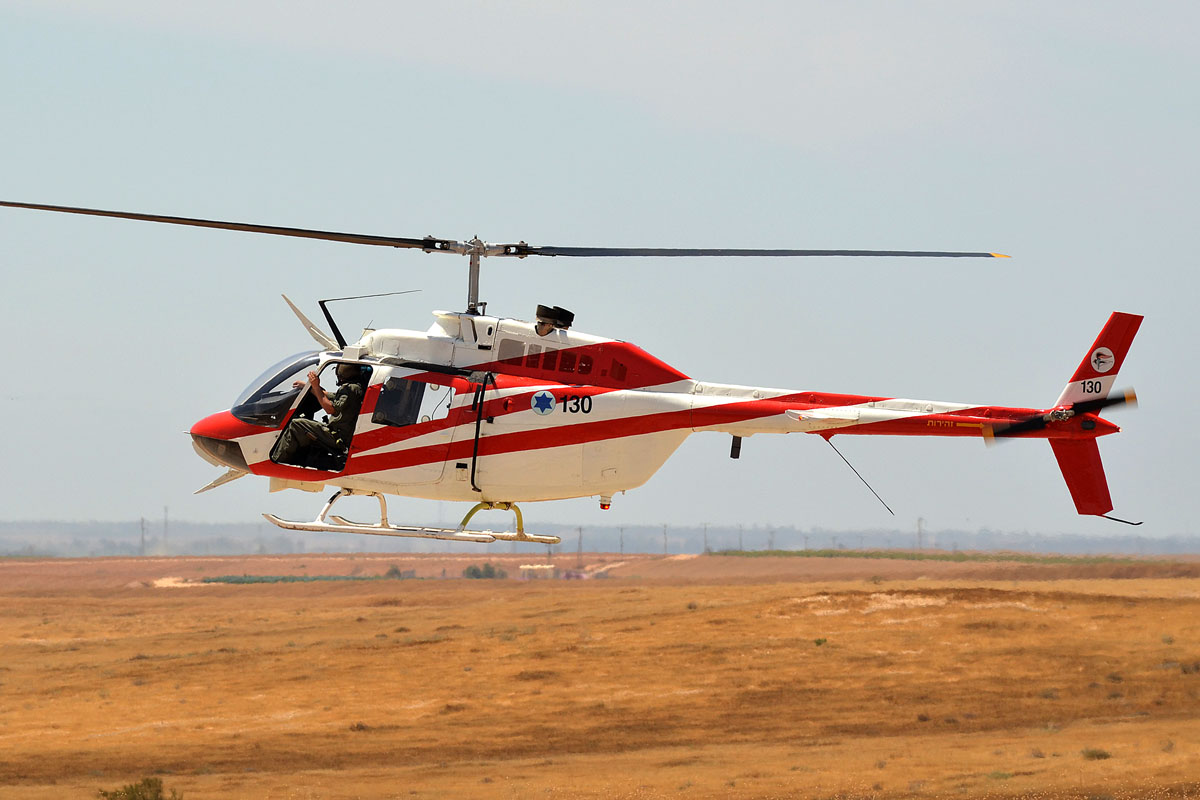
IN THE BEGINNING
Israel's operational experience with helicopters began as early as 1951 using few Hiller 360s. However, until the early '60s the milityary use of rotary-wing types
was mainly limited to the liaison and rescue rolkes. Because of the modest financial resources available at that time, priority was understandably given to fighter
aircraft.
The introduction of significant numbers of helicopters occurred only after the Second Arab-Israeli War of 1956, when Heil Ha'Avir's operational capabilities were
progressively increased by the acquisition of a large and versatile fleet. The new helicopters were capable of performing effective transport and communication tasks,
reconnaissance, SAR, MEDEVAC and supporting commando teams. Thirty-one Sikorsky S.58s from US (seven) and Germany (24) surplus stocks were added to an existing
pair of Sikorsky S.55. Fifteen Alouette IIs and an initial batch of five S.A. Super Frelons were purchased from France from 1960 onwards, while from the US came
about a dozen Bell B-47Gs and Hiller UH-12s.
These arrivals made the establishment of the first helicopters squadrons possible n the early 1960s, resulting in their integration with the Army’s elite units.
The acquisition of the Super Frelon, in particular, allowed the rapid deployment of substantial ground forces and light armored vehicles, even over long distances.
This basic conceptual change widely demonstrated its worth during the Six Day War of 1967 (Third Arab-Israeli War), during which the helicopters played a key role
in the conquest of the Golan Heights, carrying paratroopers well behind Syrian lines.
The Super-Frelons were used to perform several headline-grabbing commando missions during the subsequent years, such as the destruction of the Lebanese national
airline's fleet at Beirut airport in December 1968, or the Ras Gharib and Shedwan Island raids, in December 1969 and January 1970, during which Egyptian radar
equipment were captured, with its components being transferred intact to Israel.
During the second half of the '60, Israel abandoned France as its main supplier of military hardware, with this role being taken on by the United States.
Starting in 1969 20 Agusta-Bell AB-205As were introduced into service as well as a number of UH-1D from US production. The first aircraft were immediately put
into action against PLO formations along the Jordan valley, where they were also used in the gunship role. In the same period, the first ten CH-53Gs were supplied
by the Americans. These heavy transport helicopters were later extensively used for deep penetrations into the Egyptian territory.
Immediately after the Yom Kippur War in 1973, some B-206As (OH-58A) began to arrive to replace the Alouettes. The Jet Rangers were followed in 1975 by the first
true combat helicopter, the Bell AH-1 Huey Cobra and, at the end of the decade, by the Hughes 500MD Defender.
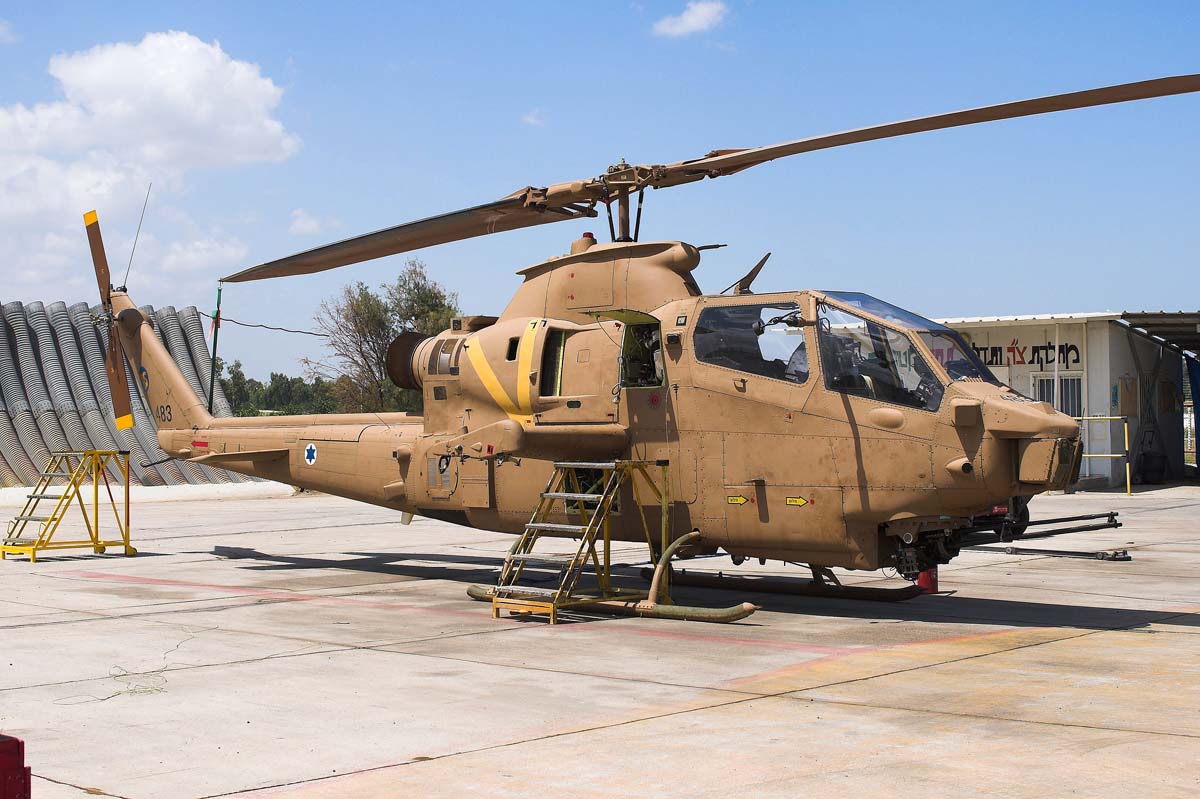
ATTACK HELICOPTERS AND OPERATIONAL MISSIONS
More than sixty Cobras -AH-1E, F, G, and Q variants, progressively updated to AH-1S version- were delivered, but the Tsefa remain active in only two units: the aforementioned Flying Training School at Hatzerim IAFB, which flies the older AH-1F model, and the 160 Squadron (The Northern Cobra) based in Palmachim IAFB with the latest and more performing AH-1S. These latter are now mainly used for the armed escort of other helicopters carrying troops or in Combat SAR missions. Powered by a Lycoming T53L-703 turbine rated at 1343 kW, the Tsefas are armed with up to eight optically guided TOW missiles, or 2.75in rocket launchers, plus an M197 three-barreled 20mm rotary cannon under the nose.
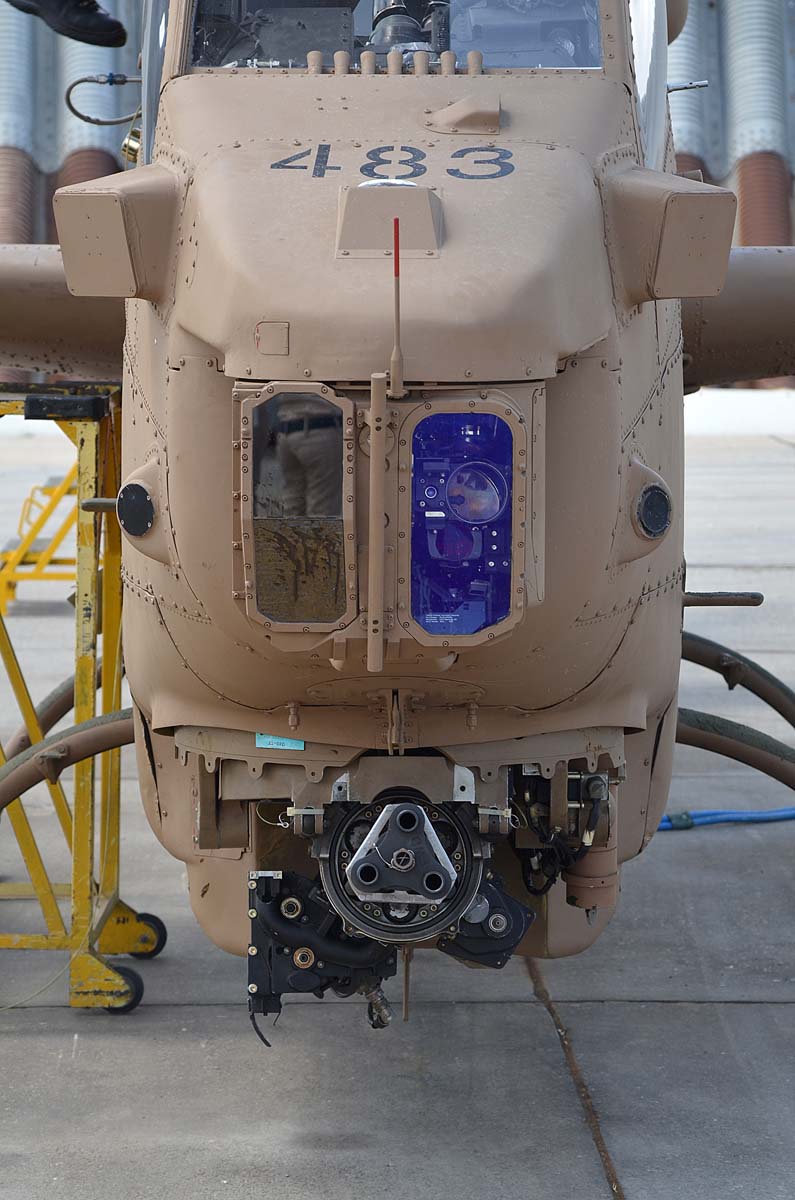
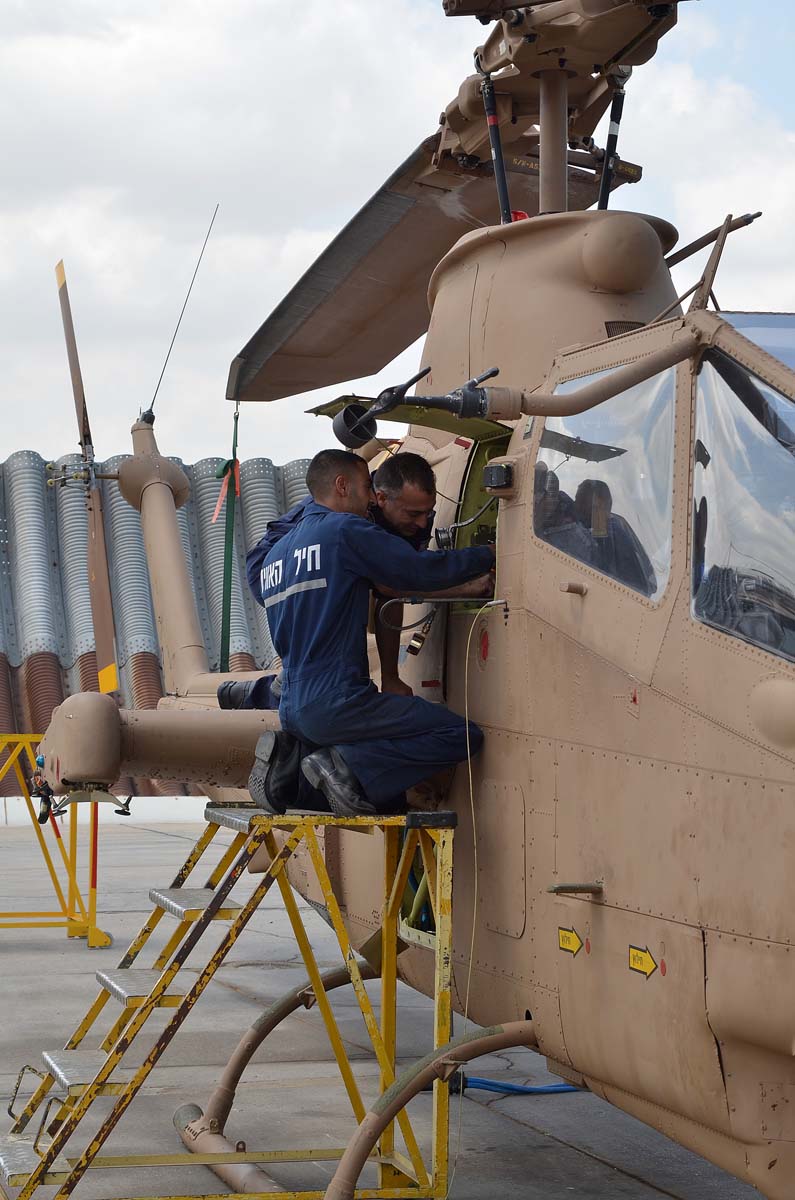
Although replacement of the Tsefa with a new armed helicopter is not yet on the agenda, in 2008 the Heyl Ha'Avir tested an armed version of the UH-60. Modified, according to reports, by Israelian Elbit Systems, this was Blackhawk equipped with sophisticated electronic devices, such as electro-optical targeting systems, and a ladar for digital mapping, as well air-to-ground missiles derived from the Rafael SPIKE family and an under-fuselage cannon. After about a year of testing this project has been stood down, although the technological know-how acquired may yet have positive economic and industrial consequences in the near future.
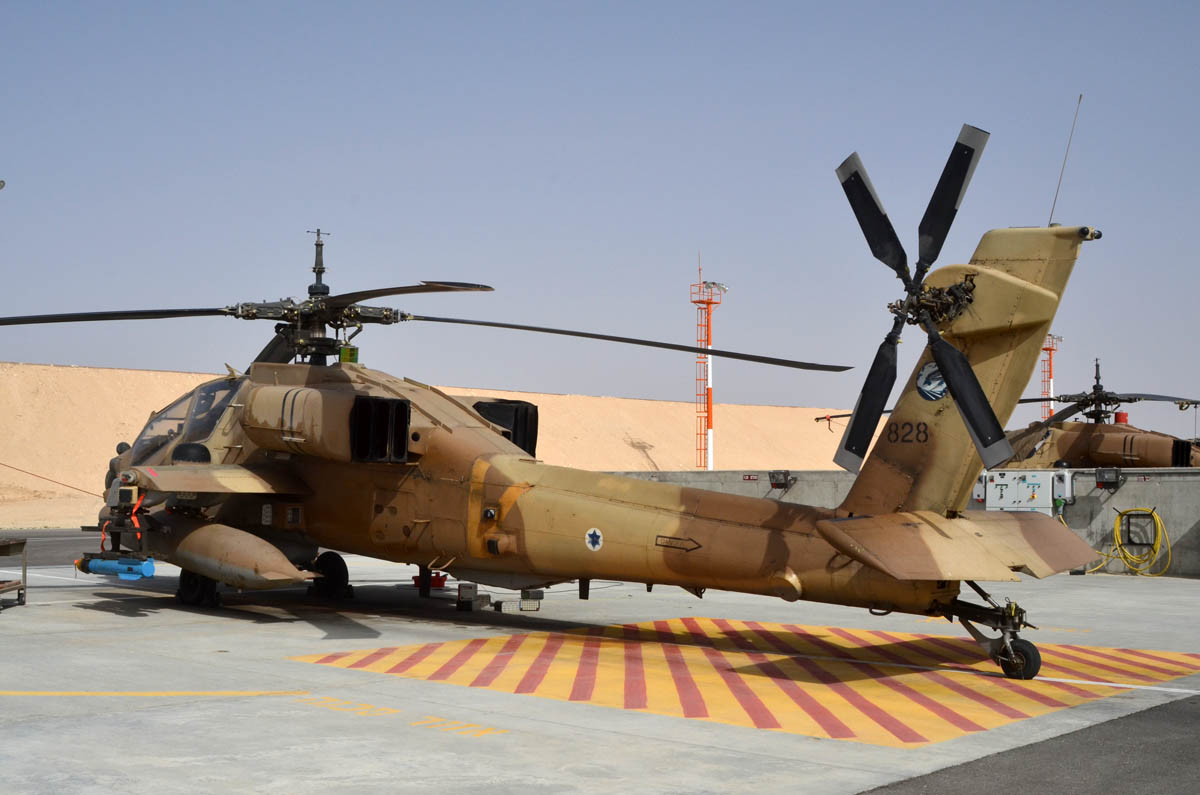
For anti-tank missions, the IAF employs the Boeing AH-64As Peten (Python) and the AH-64Ds Saraf (Serpent), flying respectively with 190 Squadron (The Magic Touch) and
113 Squadron (The Hornet). Although both units are nominally based in Ramon IAFB in the Negev Desert, some aircraft are always deployed at other air bases for
stand-by alert duties with a maximum ten-minute response time before take-off.
The most noticeable external difference between the two models lies in the disc-shaped radome above the main rotor of the AH-64D, containing the AN/APG-78 Longbow
millimeter-wave Fire Control Radar (FCR). In addition, the Saraf is equipped with more powerful (1419 kW) General Electric T700-GE-701C engines.
With its nose-mounted Target Acquisition and Designation Sight (TADS) incorporating a laser spot tracker, laser ringefinder/designator, TV camera, direct optics,
and FLIR linked to the Pilot Night Vision Sensor, the AH-64 can operate without restriction at night and in bad weather. Defensive avionic suites include the Elisra
Seraph self-protection systems, with an SPS-65 Missile Warning Receiver, SPJ-40 radar jammer and chaff dispensers.
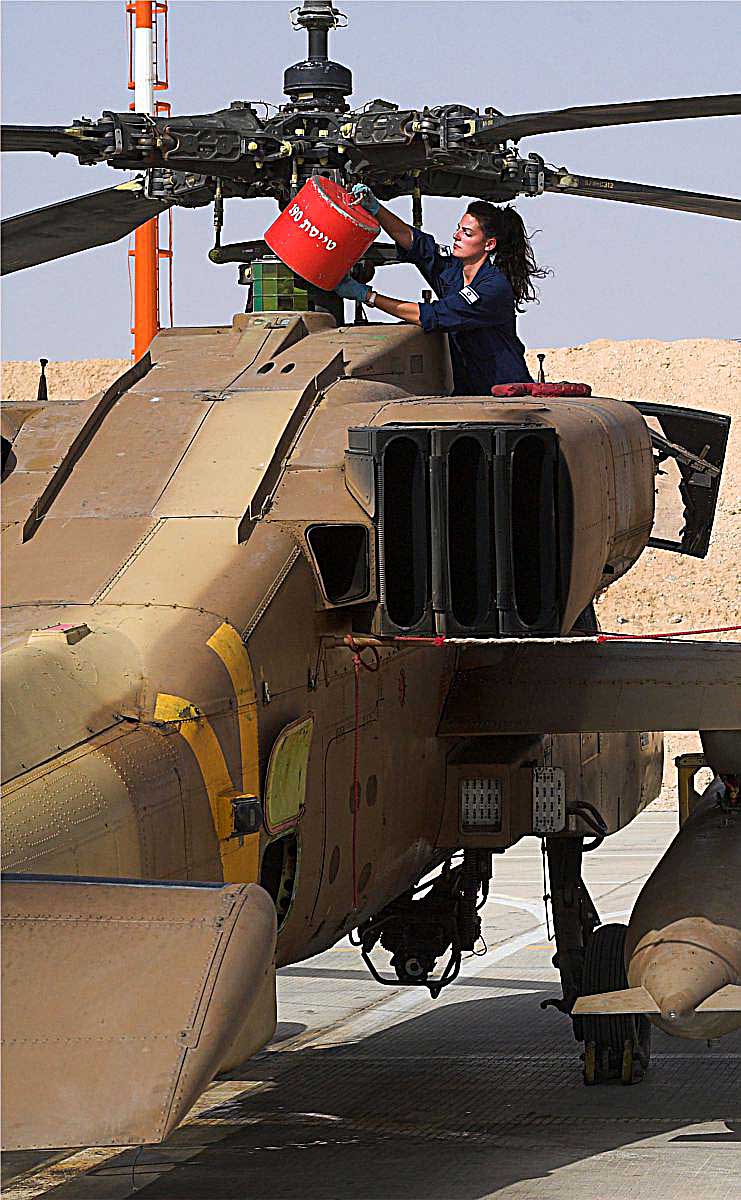 Armament of the Petens and Sarafs includes a maximum of 16 anti tank fire-and-forget AGM-114L Hellfire missiles, or four launchers with 19 2.75in rockets each
(or a combination of both), plus an under-fuselage Boeing M230 30mm gun with 1200 rounds. Combat radius without auxiliary fuel tanks is about 300 miles, more than
enough to face any threat posed by Hamas in the Gaza Strip or Hezbollah in Lebanon or hostile elements in Syria.
Armament of the Petens and Sarafs includes a maximum of 16 anti tank fire-and-forget AGM-114L Hellfire missiles, or four launchers with 19 2.75in rockets each
(or a combination of both), plus an under-fuselage Boeing M230 30mm gun with 1200 rounds. Combat radius without auxiliary fuel tanks is about 300 miles, more than
enough to face any threat posed by Hamas in the Gaza Strip or Hezbollah in Lebanon or hostile elements in Syria.
The first AH-64As arrived in Israel in 1991, and some of these have now been upgrated to Delta standard directly from Boeing: the IAF requirement is to have some
20 AH-64Ds, from a total of 45 received. However, even aircraft that have not been retrofitted have received some avionics improvements that make them similar to
the Saraf. In addition, some examples of both models have been modified by introduction of the locally produced Elbit Systems NADIV C3 (Control-Command-Comunication)
data-link equipment. This allows helicopters, UAVs, tanks and infantry vehicles to share real-time up-to-date tactical situation information, without the use of
conventional radio channels.
The Petens of 190 Squadron were heavily used in both the 1996 ('Operation Accountability') and 2006 ('Operation Grape of Wrate') Lebanon War, while the newer
Sarafs of 113 Squadron took part in the latter engagement and, more recently, in 'Operation Cast Lead' in December 2008, where they had the task of destroying
the rocket launcher sites of Hamas militants in the Gaza Strip.
Both versions of Apache have accumulated thousands of flight hours in combat against Hezbollah in the Gaza Strip and in the Eilat area. Besides the suppression of
launch sites, their main role is engagement of moving vehicles, as well as missions against strategic targets located deep in enemy territory. Due to their potential
for surgical strikes and ability to fly silently, the AH-64s have been used with great effectiveness for extra-judicial elimination of terrorist leaders.
As can be imagined, the field of action of these helicopters is one of the most delicate and demanding, as they operate in areas densely populated by civilians
where the border between them and combatants is often blurred and uncertain. In such situations, when even the smallest mistake can cost a lot, the mission
leader is always responsible for distinguishing right from wrong during the attack. Workshops to enable AH-64 crews ‘to make the best choise’ are often organized
by the Ovda IAFB-based ‘Flying Dragons' Squadron, in a similar way to how the NATO trains pilots with the Tactical Leadership Programme in Albacete.
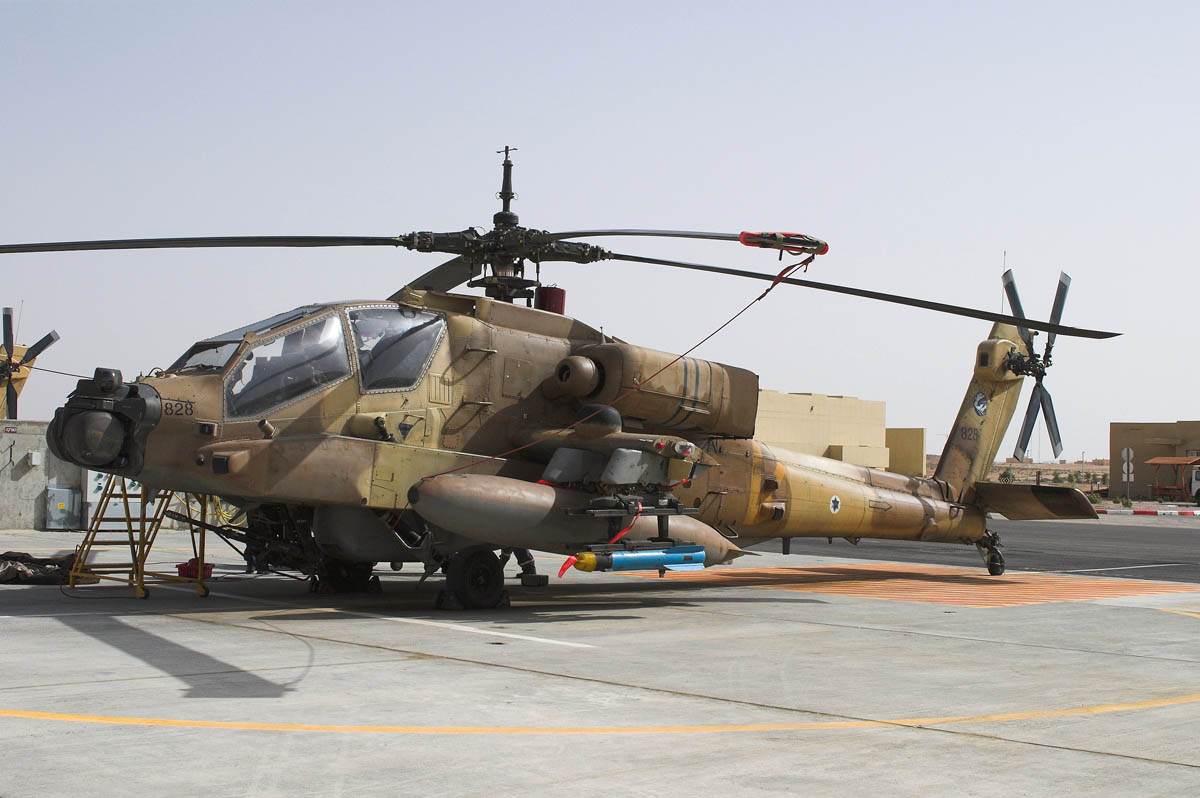
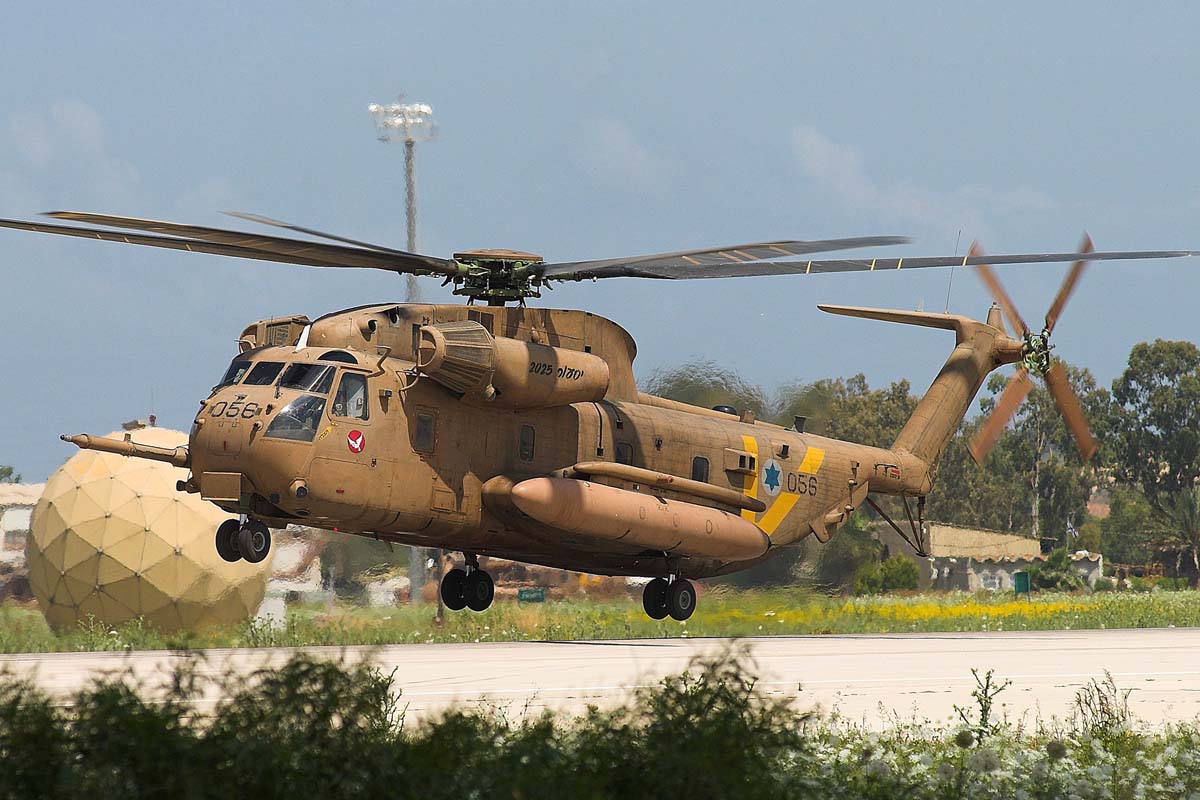
LOAD HAULERS
Regarding the more traditional troop and cargo transportrole, the Heyl Ha'Avir uses the Sikorsky UH-60/S-70 for medium transport and general purposes duties, and Sikorsky CH-53/S.65C-3 for heavy transport work.
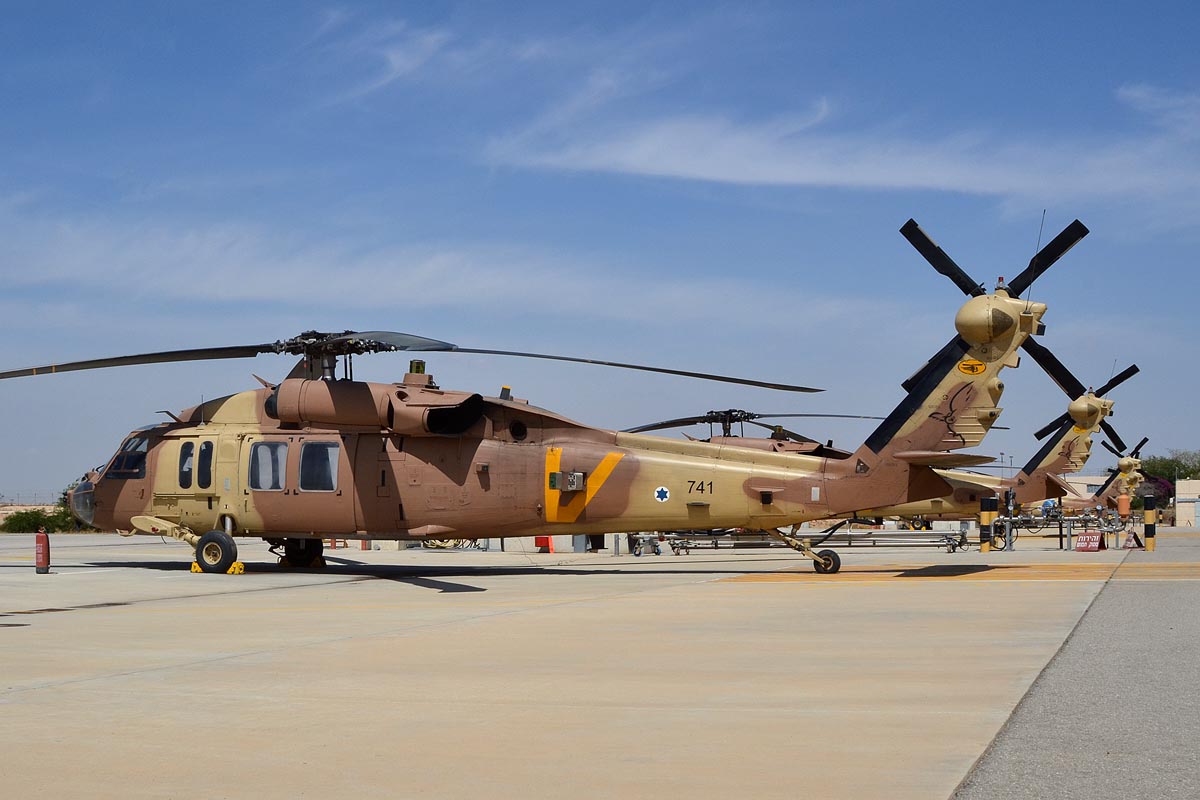
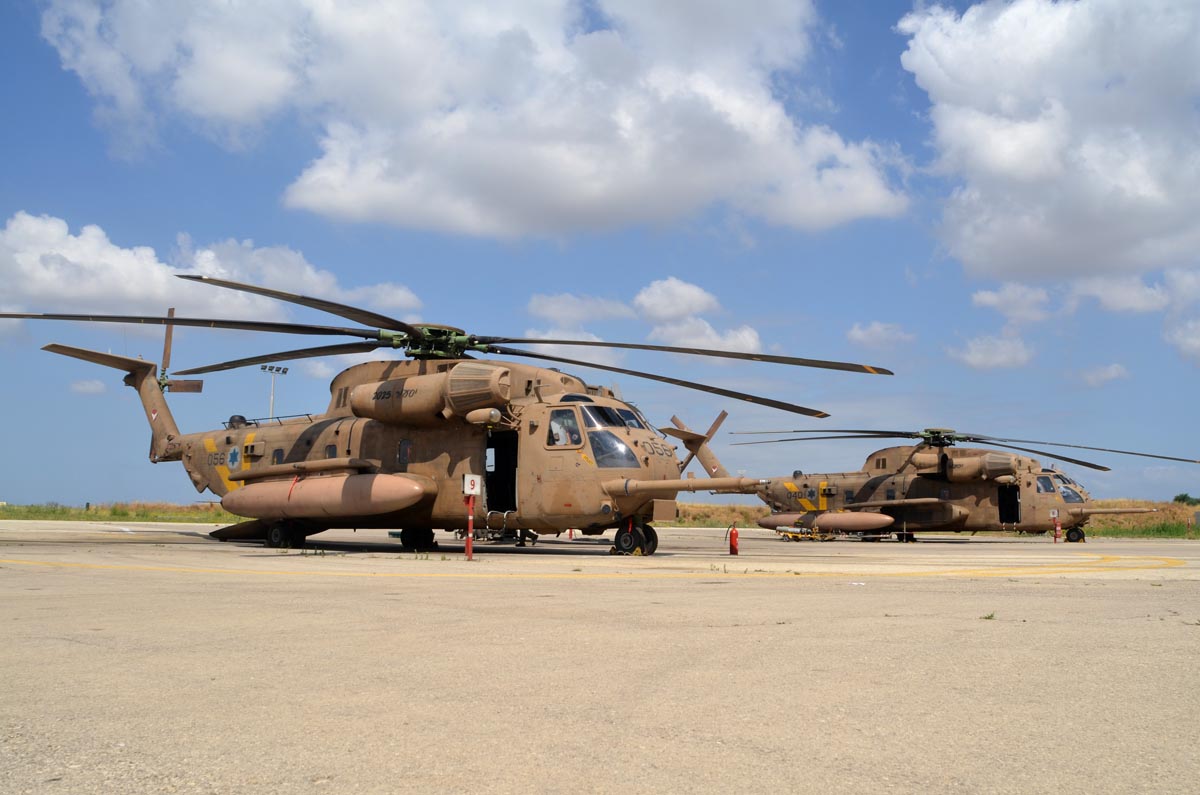
With more than 60 delivered since 1967, the CH-53 Yas'ur (Petrel) are now split across two units, both based in Tel Nof IAFB: the 114 Squadron (The Night Leaders) and 118 Squadron (The Nocturnal Birds of Prey). Able to carry up to 52 equipped soldiers and with a range in excess of 1200 km, further extendable with in-flight refuelling, the machines are also used for MedEvac missions with a maximum capacity of 22 stretchers, plus Combat-SAR (C-SAR) special operations infiltrations enemy territory.
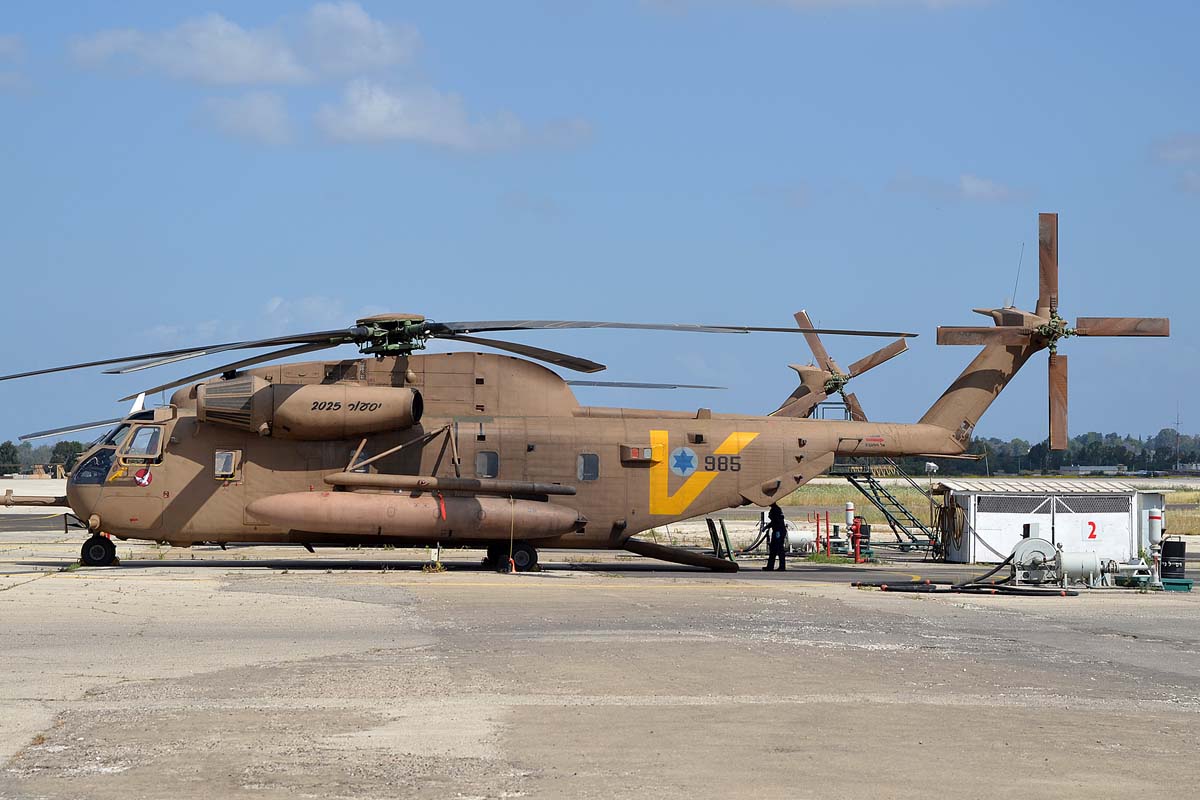
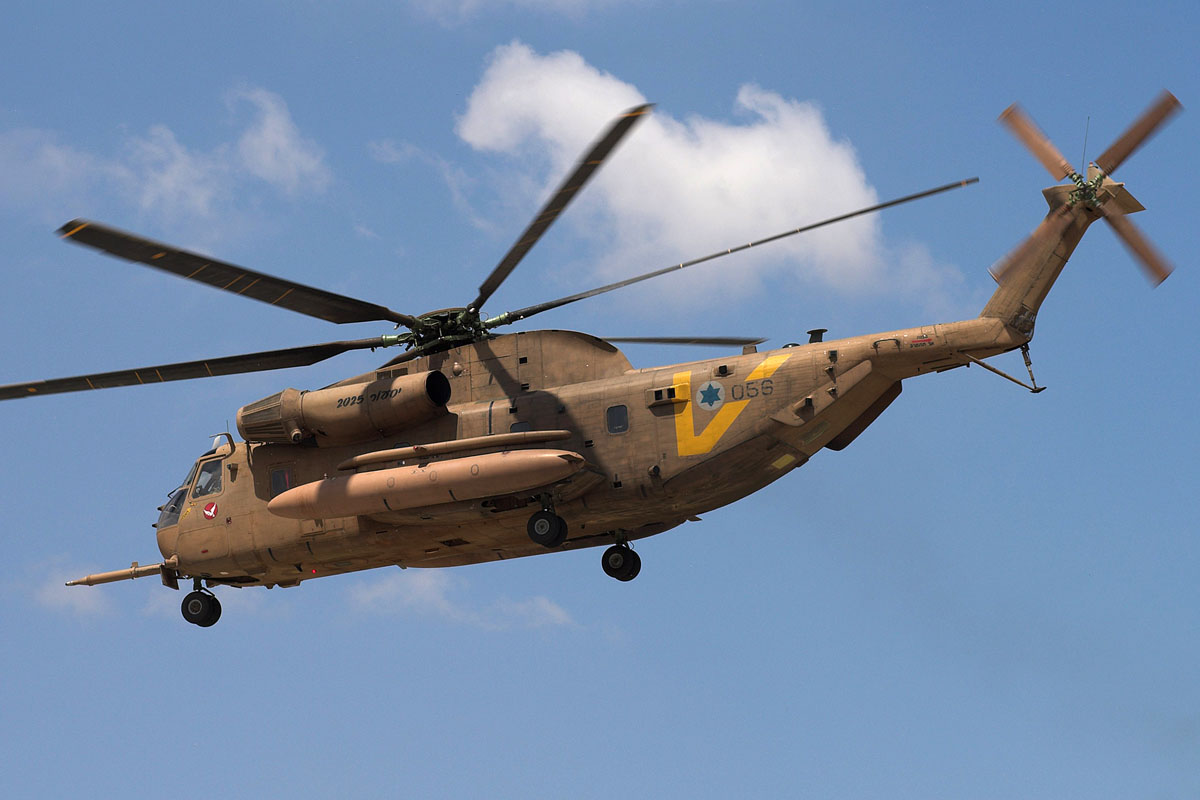
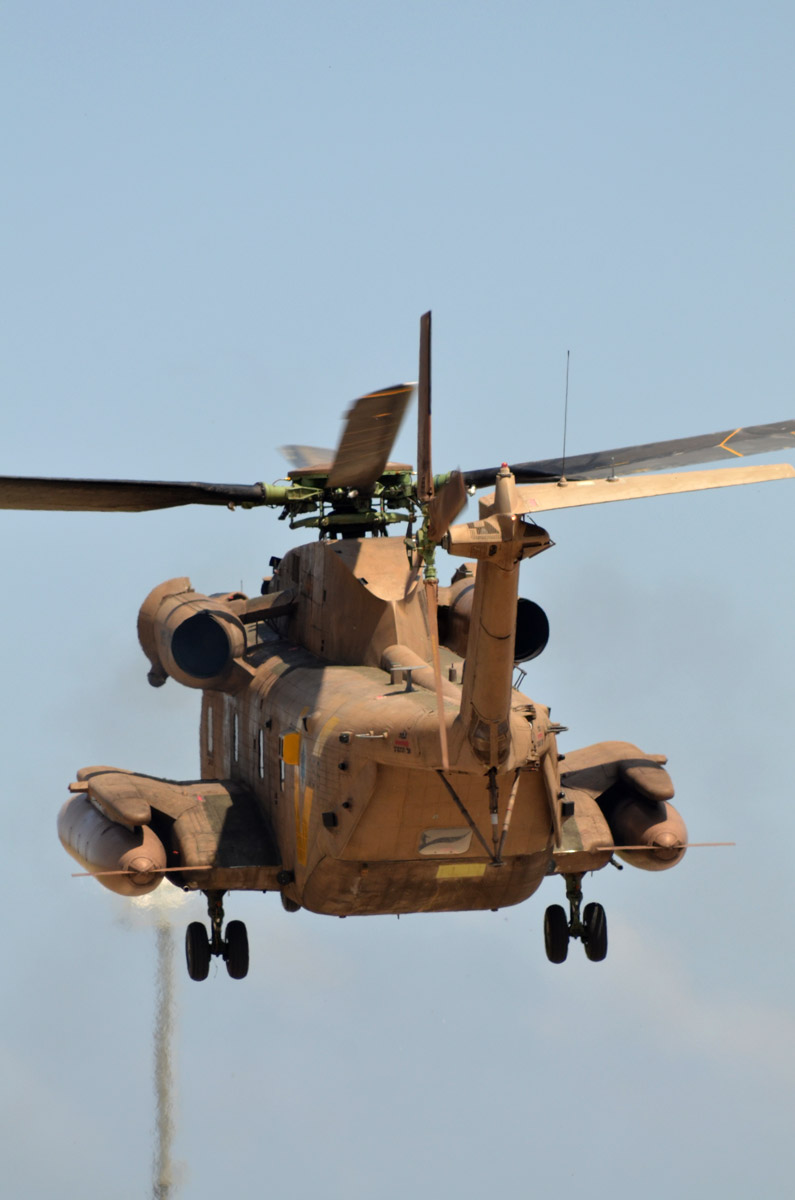 Over the years, the helicopters have been continuously updated, especially as regards the avionics. In 1994 the IAF launched the Yas'ur 2000 programme, followed
in 2006 by the Yas'ur 2025, which is expected to keep the machines operational at least until that date. Improvements include installation of new EW and satcom
equipment, plus the ELOP Laser Obstacle Ranging & Display (LORD) system, for detection of difficult-to-identify obstacles. This is useful when landing in dusty areas
where the brown-out effect limits the pilot's visual contact with the ground. With these new devices the Yas'ur 2025s are also usefeull as radio relays in mountainous
areas, where they can remain in hover up to their maximum operating ceiling of 18,000ft and exchange information and provide battlefield awareness for ground
vehicles or attack helicopters.
Over the years, the helicopters have been continuously updated, especially as regards the avionics. In 1994 the IAF launched the Yas'ur 2000 programme, followed
in 2006 by the Yas'ur 2025, which is expected to keep the machines operational at least until that date. Improvements include installation of new EW and satcom
equipment, plus the ELOP Laser Obstacle Ranging & Display (LORD) system, for detection of difficult-to-identify obstacles. This is useful when landing in dusty areas
where the brown-out effect limits the pilot's visual contact with the ground. With these new devices the Yas'ur 2025s are also usefeull as radio relays in mountainous
areas, where they can remain in hover up to their maximum operating ceiling of 18,000ft and exchange information and provide battlefield awareness for ground
vehicles or attack helicopters.
For medium transport Heyl Ha'Avir uses Sikorsky UH-60/S.70 Yanshuf (Owl), which have completely replaced the Bell 212s and Bell 205/UH-1Ds also for VIP missions,
SAR, CSAR and liaison missions. The first ten helicopters, delivered during the summer of 1994, were former US Army UH-60As. In 1997, 15 new S-70A-50s were
acquired, joined by another 24 machines from 2000 on, this time S-70A-55 models. 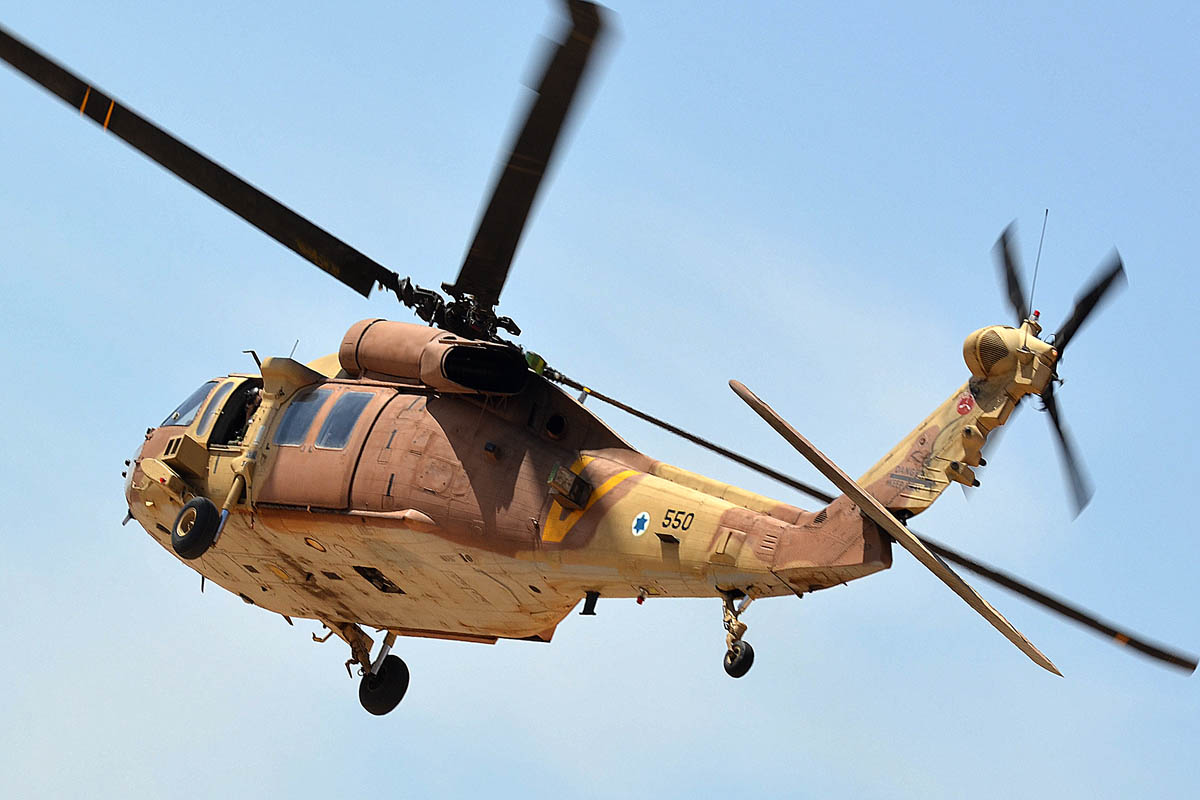 Differences
between the three versions are minimal and relate mainly to the maximum take-off weight and performance at full load. For the pilots, however, they are pratically
identical, so they can fly every machine assigned to the units. Numerous improvements have been made made to the on board electronics, especially communications
equipment, while some helicopters have been fitted with an in-flight refuelling probe.
Differences
between the three versions are minimal and relate mainly to the maximum take-off weight and performance at full load. For the pilots, however, they are pratically
identical, so they can fly every machine assigned to the units. Numerous improvements have been made made to the on board electronics, especially communications
equipment, while some helicopters have been fitted with an in-flight refuelling probe.
Two units fly the Yanshuf -124 Squadron (The Rolling Sword) based in Palmachim IAFB and 123 Squadron (The Southern Bells) at Hatzerim IAFB. On both air bases,
a helicopter fitted with additional wing tanks is on permanent stand-by-alert, ready to take-off for SAR missions if the need arise.
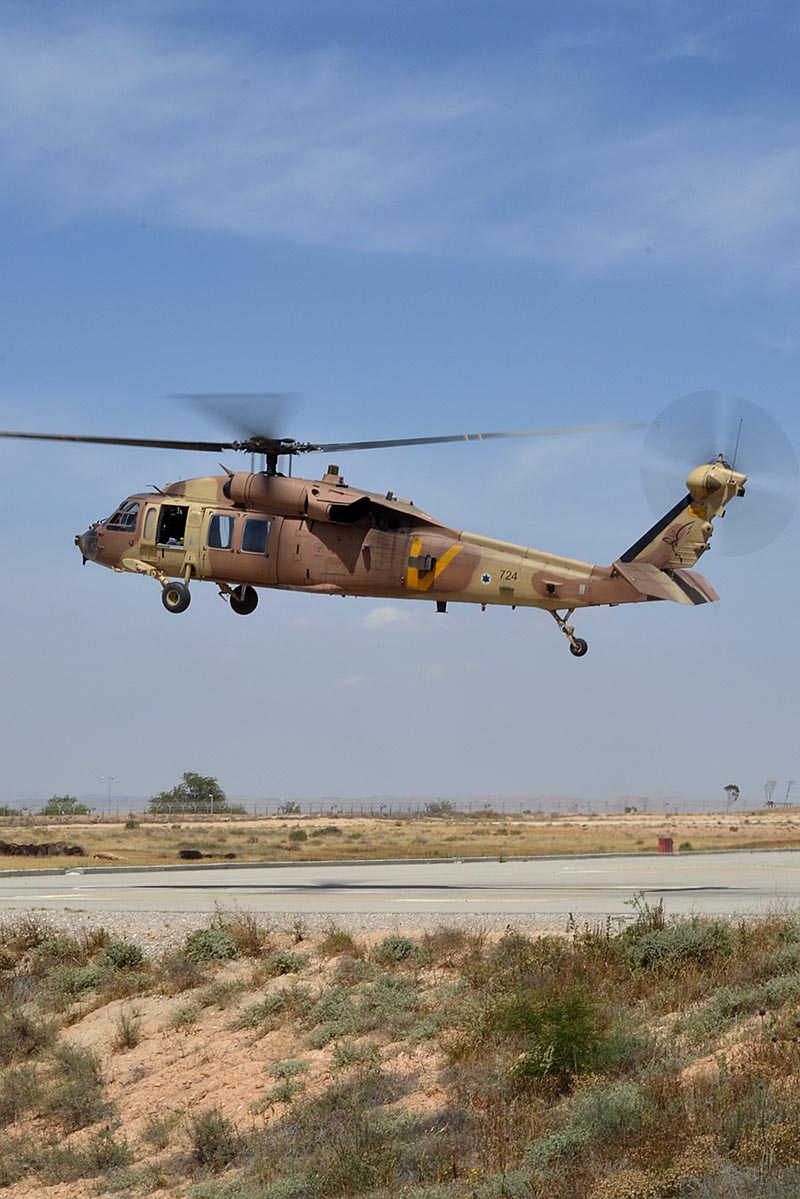
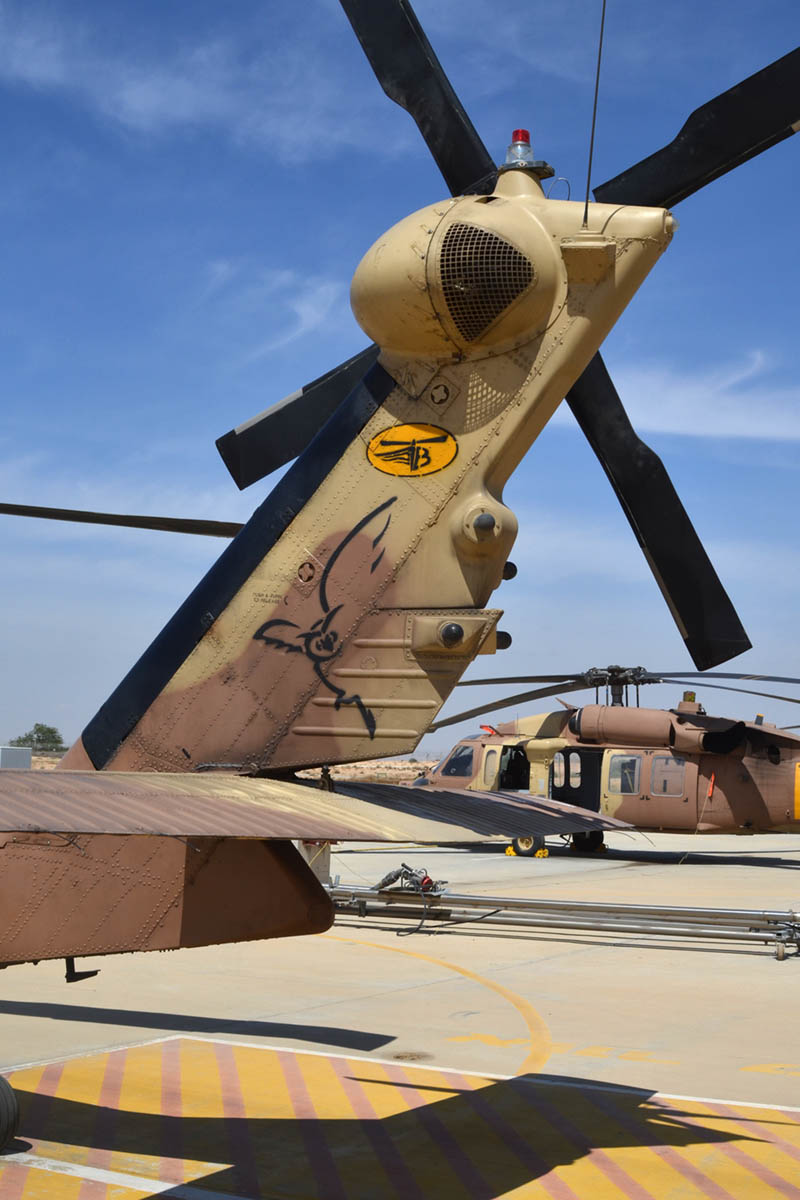
Finally, five Aerospatiale AS.565MA/HH-65A Atalef (Dolphin) helicopters are based at Ramat David IAFB. These belong to 193 Squadron (Defenders Of The West)
and operate in support of Israeli Navy frigates.
Israel adopted in the years several color schemes for its helicopter fleet. Generally speaking, in the last two decades, the attractive standard three tone disruptive
camouflage of brown-sand-green colors, substituted the wrap-around olive drab, IR suppressive scheme. A number of experimental camouflages emerged from time to time,
such as for example the so called “Syrian Scheme”, formed by a light shade of green over imposed on a light sand base. In the most recent years however, the AH-64
and UH-60 fleets adopted a two tone color scheme of light and dark sand, also known as the “Tiger Scheme”, while the Ya’sur fleet wears a monochromatic, wrapping
around sand color. For identification purpose, at day and at night, the whole combat helicopter fleet carries an infra-red reflective V-shaped, yellow marking on
the rear fuselage.
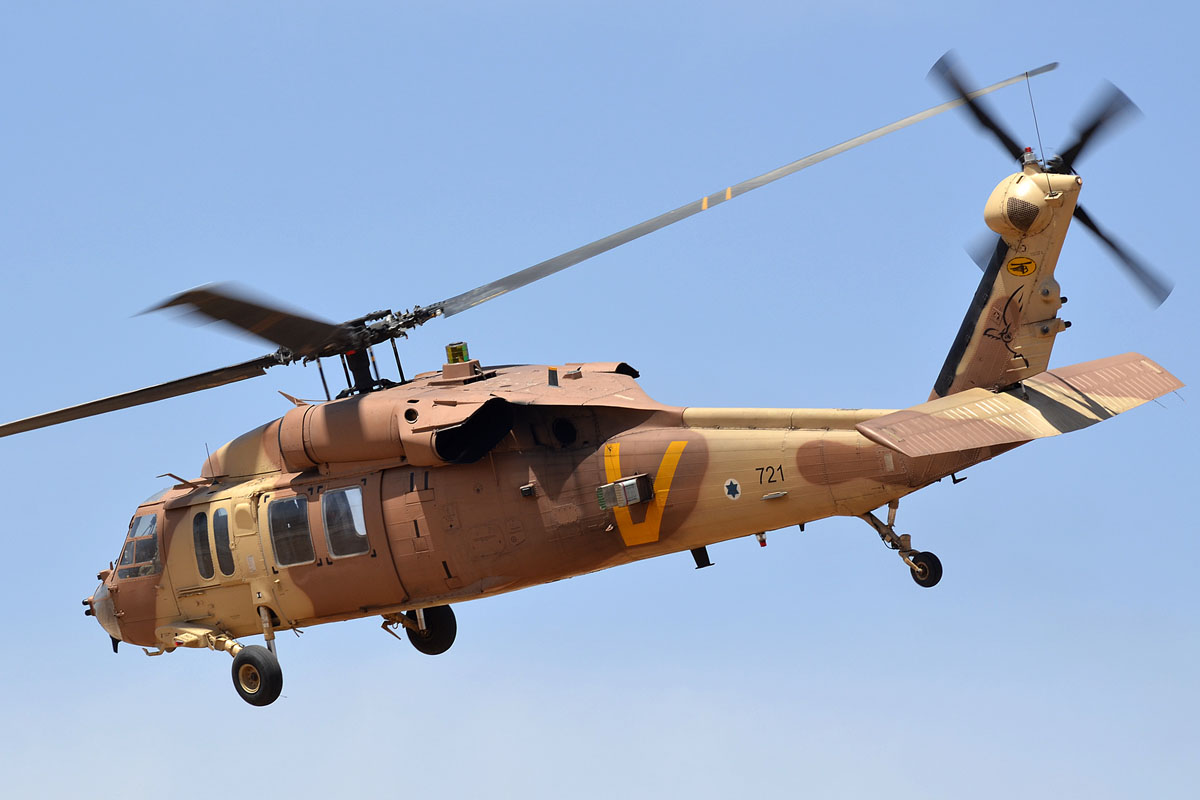
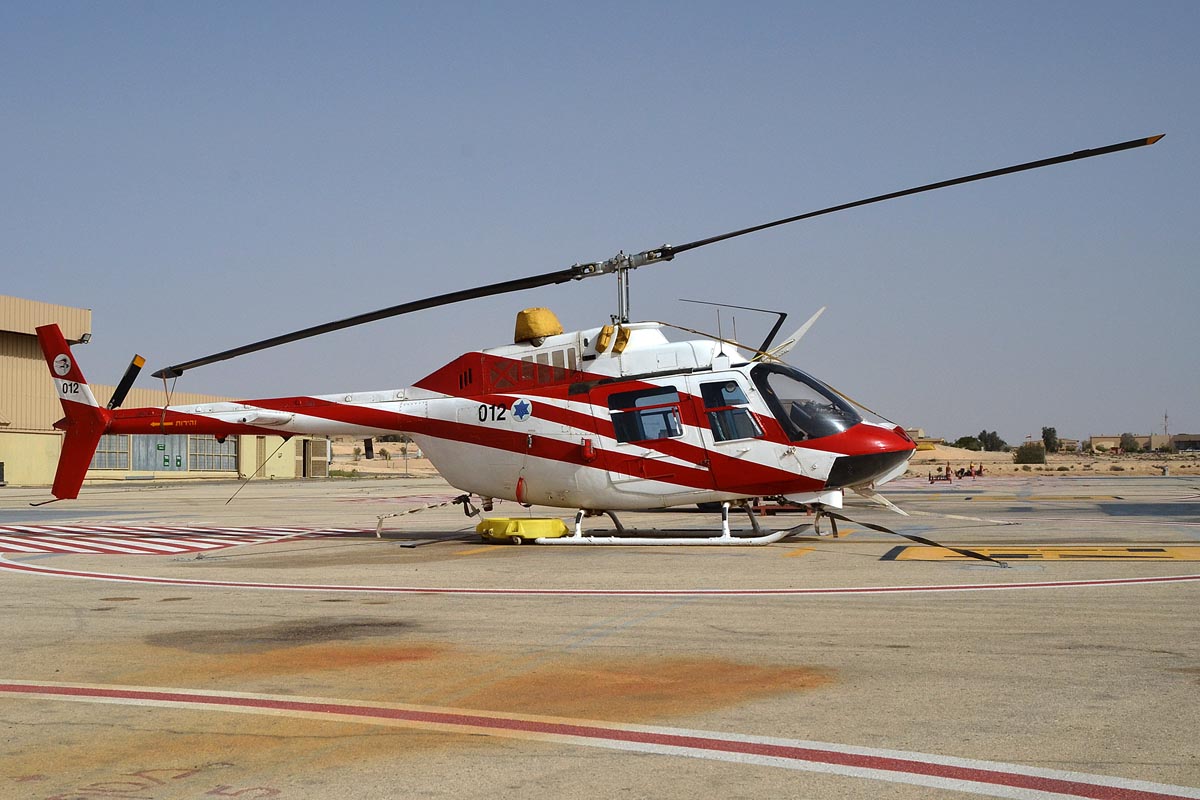
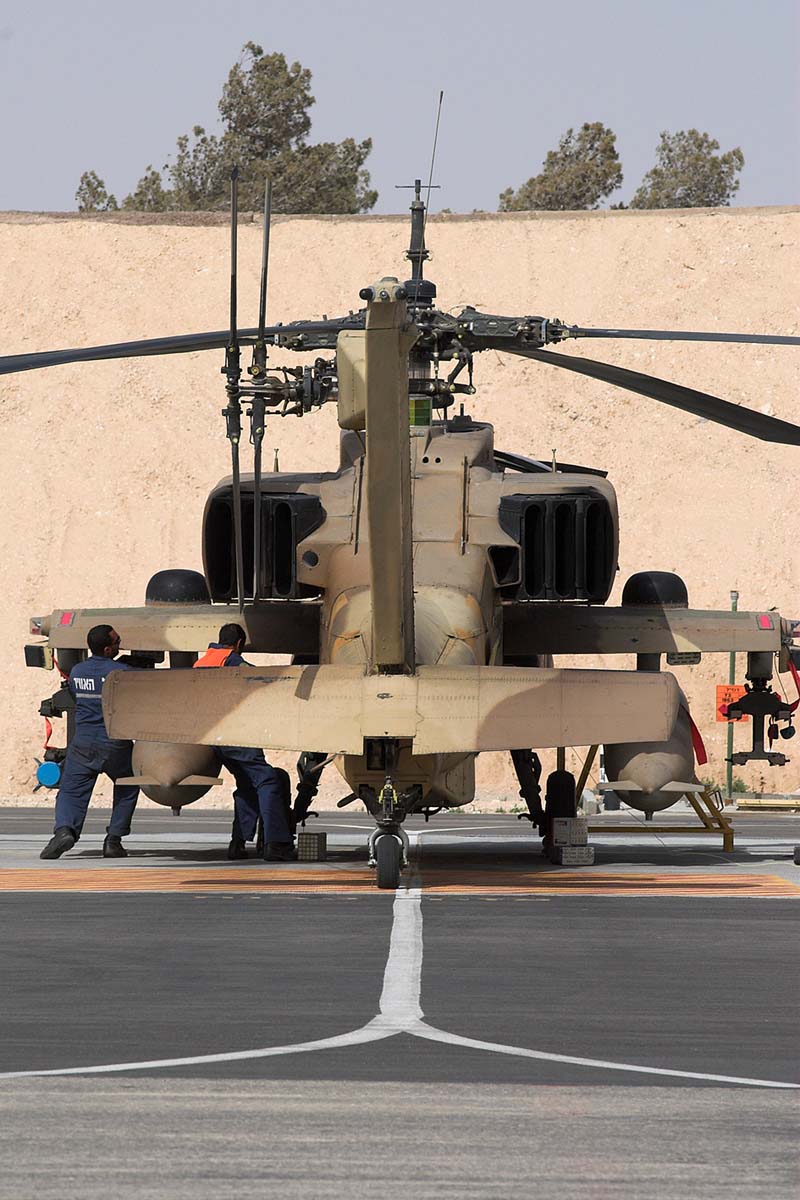
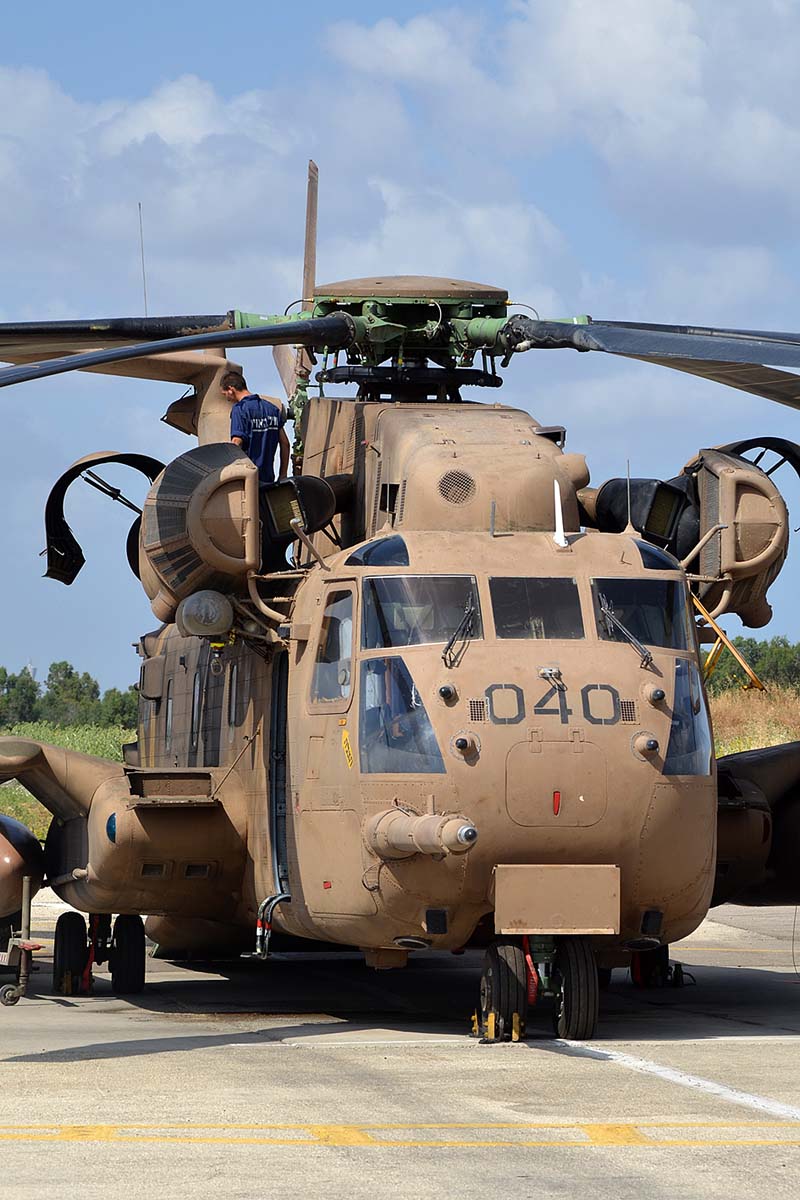
2012© Mauro Finati & Paolo Rollino